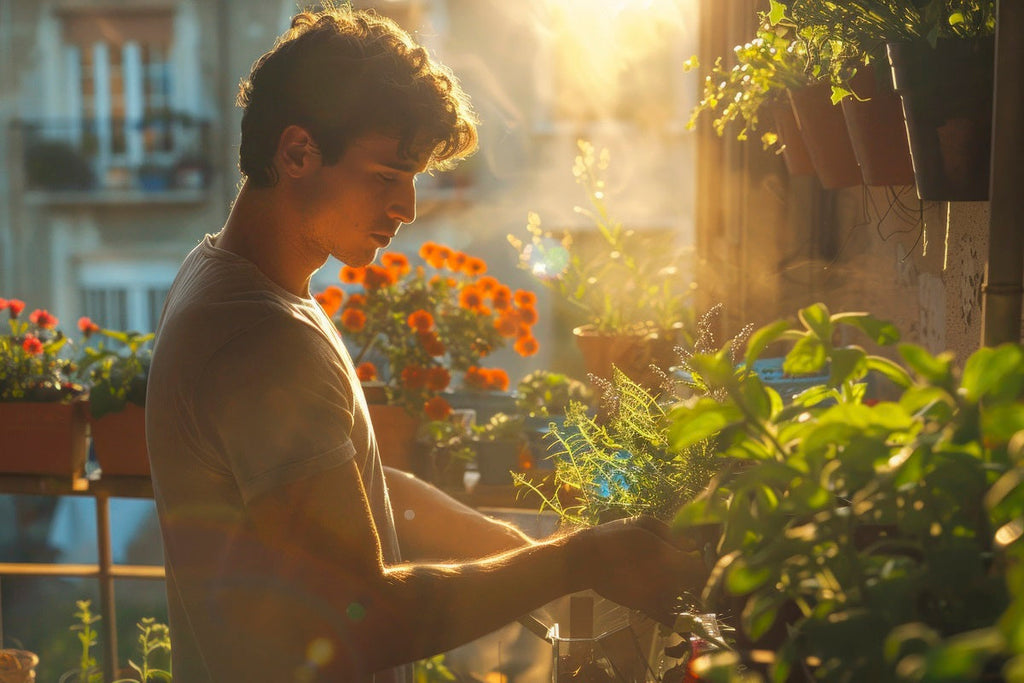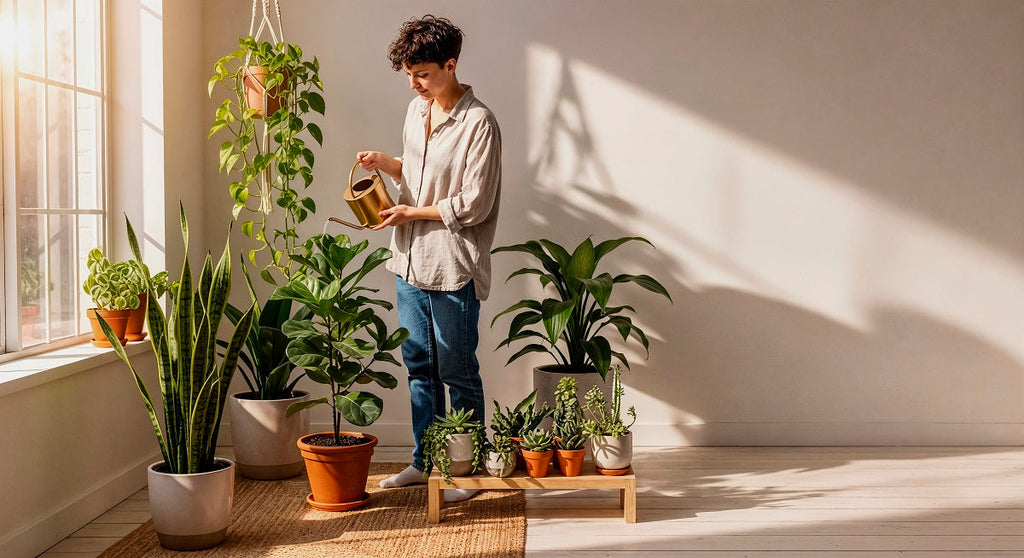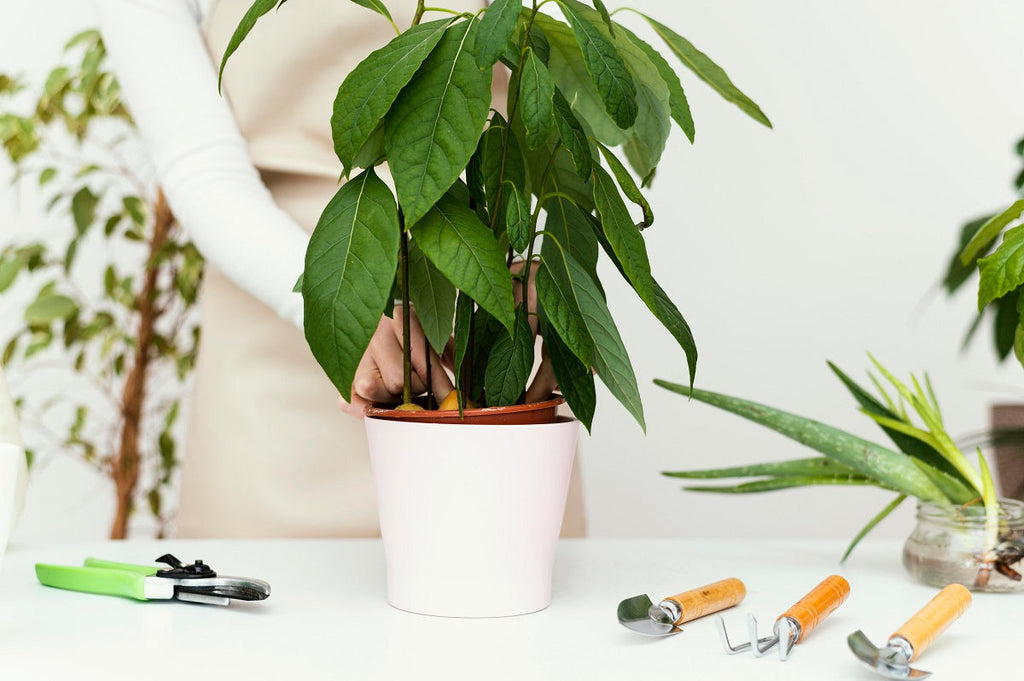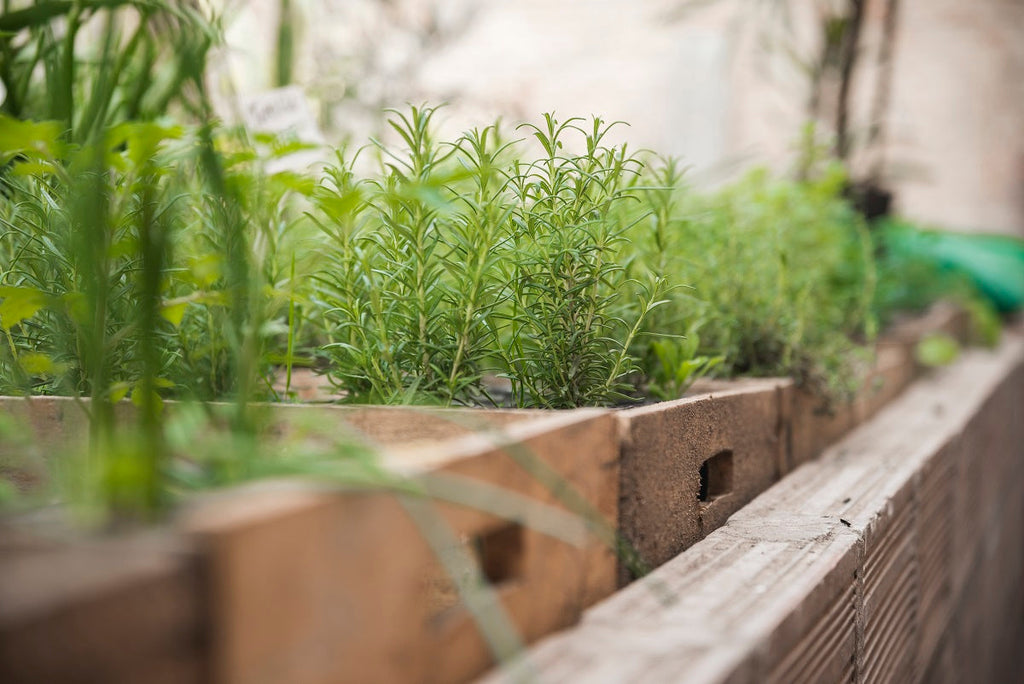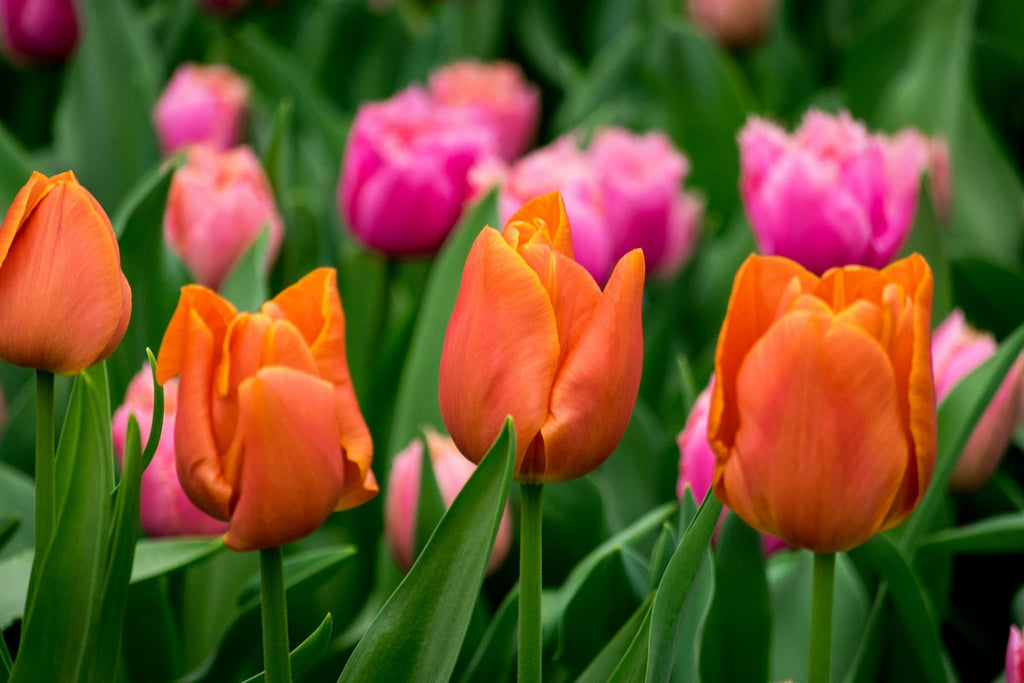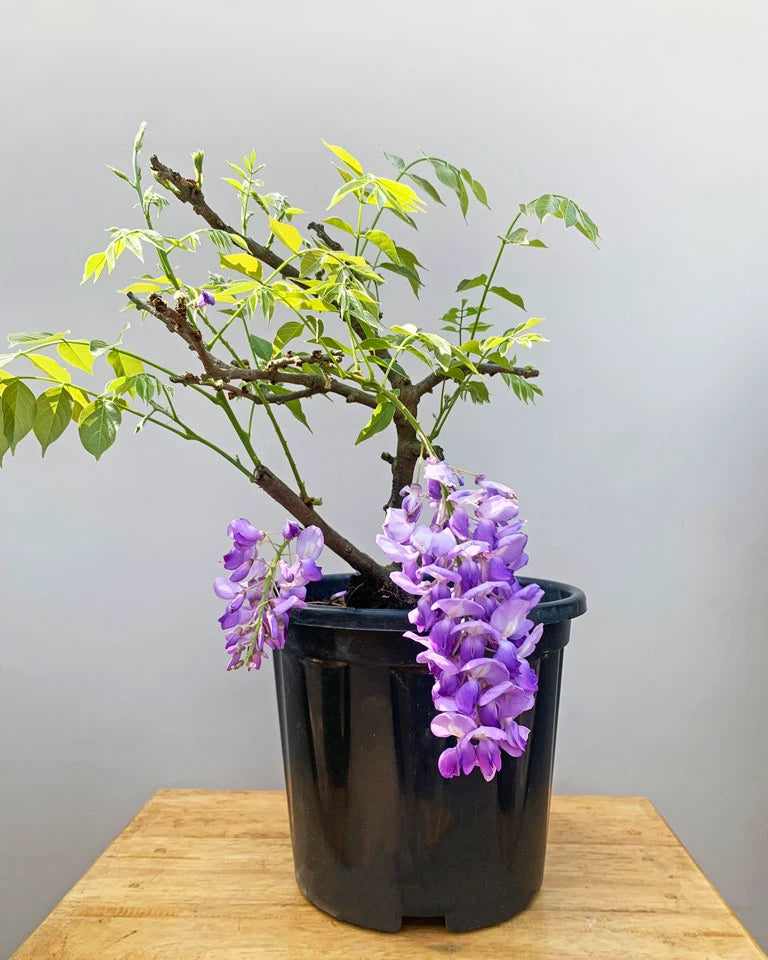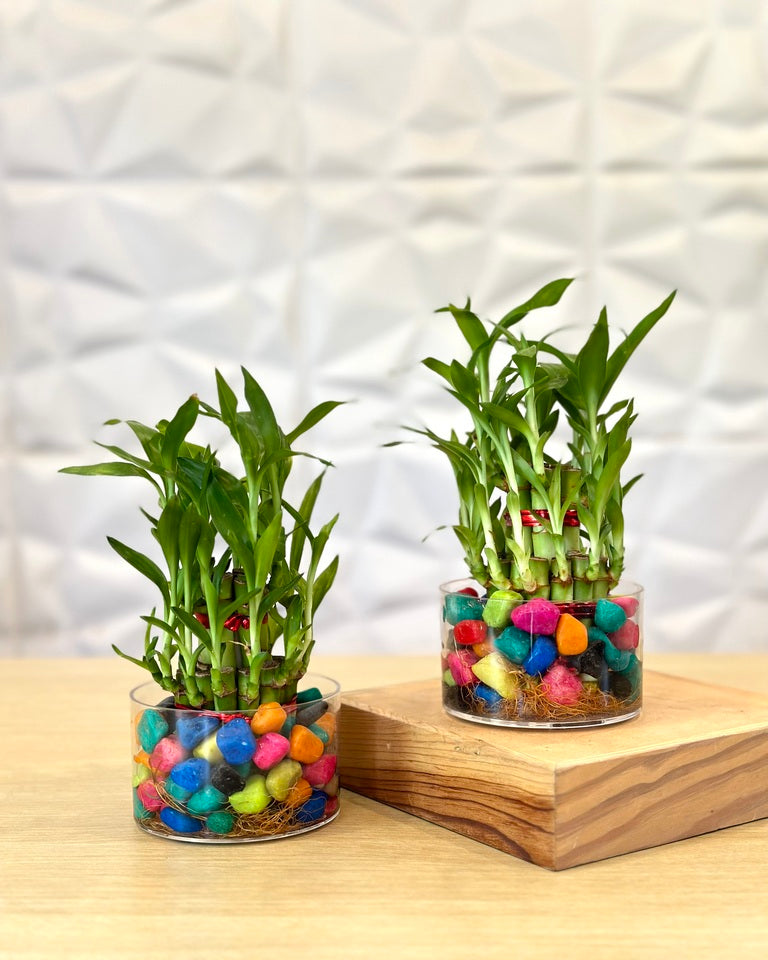
Best Way to Water Indoor Plants: Avoid Overwatering and Underwatering

Indoor plants are the heart of a cozy, calming home. But keeping them alive? That’s where the real challenge begins. One of the most common mistakes plant parents make is watering their indoor plants incorrectly — either too much or too little.
In this complete guide, we’ll break down everything you need to know about how to water your houseplants the right way. From the science of hydration to the signs of overwatering in plants and underwatering in plants, this blog has you covered.

Why Watering Indoor Plants is Tricky (But So Important)
Water isn’t just a drink for your plant — it’s how it breathes, eats, and thrives. But unlike outdoor plants that benefit from rain and natural drainage, indoor plants rely entirely on you.
That’s why proper watering is the foundation of plant care. A little mistake, and you’ll see:
-
Droopy leaves
-
Brown edges
-
Yellow foliage
-
Root rot or stunted growth
These are all red flags and usually point to either overwatering or underwatering.
Understanding Your Plant’s Natural Habitat
Before we jump into watering techniques, you need to know your plant’s roots — literally and figuratively.
Tropical vs. Desert Plants
Tropical plants like Monstera, Peace Lily, or Calatheas need more frequent watering. Why? Because in nature, they grow in humid, rain-heavy environments.
Desert plants like succulents and cacti thrive with less water — their thick leaves store moisture to survive dry climates.
Pro tip: Google your plant’s natural origin to understand its watering habits better. No one-size-fits-all here.
When is the Best Time to Water Indoor Plants?
Yes, timing matters. The best times to water are:
-
Early morning (before 8 AM)
-
Late afternoon (after 5 PM)
Why? Because the sun is softer during these hours, and evaporation is lower, giving roots enough time to soak up moisture. Watering during hot noon hours can stress your plant and waste water through evaporation.
How Often Should You Water Indoor Plants?
This is where most people mess up — and end up with either overwatered or underwatered plants.
Here’s a breakdown to make it easier:
|
Plant Type |
Watering Frequency |
|
Every 10–14 days (In Summer)
Every 20- 25 days (In Winters) |
|
Every 1–2 days (In Summer)
Every 5- 7 days (In Winters) |
|
Every 2–3 days (In Summer)
Every 8- 10 days (In Winters) |
|
Every 8–10 days (In Summer)
Every 20- 25 days (In Winters) |
Always check the top 1–2 inches of soil. If it feels dry, it's time to water. If it’s damp, wait a day or two.

Signs of Overwatering in Plants
Overwatering is a plant killer in disguise. You might think you're helping, but too much water suffocates roots and encourages rot.
Common Symptoms of Overwatering
-
Yellowing leaves (especially the bottom ones)
-
Mushy stems and roots
-
Constantly wet or soggy soil
-
Foul smell from the pot
-
Mold or fungus on the soil surface
When you see these signs, stop watering immediately. Let the soil dry out completely and check for root rot.

Signs of Underwatering in Plants
The other side of the spectrum is underwatering — when your plant just isn’t getting enough to survive.
Common Symptoms of Underwatering
-
Dry, crispy leaf tips.
-
Soil is pulling away from the pot edges.
-
Curling or wilting leaves.
-
Brown patches or leaf drop.
-
Super slow or stunted growth.
If you're noticing these signs, you’re probably dealing with underwatering in plants. It’s time to refresh your plant with a deep drink — but gently.
How to Water Indoor Plants Properly
1. Use the “Soak and Drain” Method
-
Water the soil thoroughly until excess water drains from the bottom.
-
Never let the pot sit in a saucer full of water.
-
Empty trays after 10–15 minutes.
This prevents overwatering in plants by allowing proper drainage.
2. Bottom Watering
Place the pot in a bowl of water and let it absorb from the bottom up. Perfect for dry root systems or underwatering in plants.
3. Misting (Only for Some)
Humidity-loving plants (like ferns and Calatheas) benefit from light misting. But avoid misting succulents — they can rot.
FAQs
Q1. Can I water all my houseplants at once?
Not recommended. Every plant has unique needs. Observe and adjust per plant.
Q2. Should I water less in winter?
Yes! Growth slows down during colder months, and plants need less frequent watering to avoid overwatering in plants.
Q3. Is misting enough as a watering method?
No. Misting increases humidity but doesn’t replace deep watering. It’s a supplement, not a substitute.
Final Thoughts: Find the Balance
Watering is about balance. Too much or too little water both lead to unhappy plants.
✅ Pay attention to the signs
✅ Know your plant’s needs
✅ Use tools to help you stay consistent
And remember: both overwatering in plants and underwatering in plants are avoidable; you just need the right knowledge and a little plant intuition.



